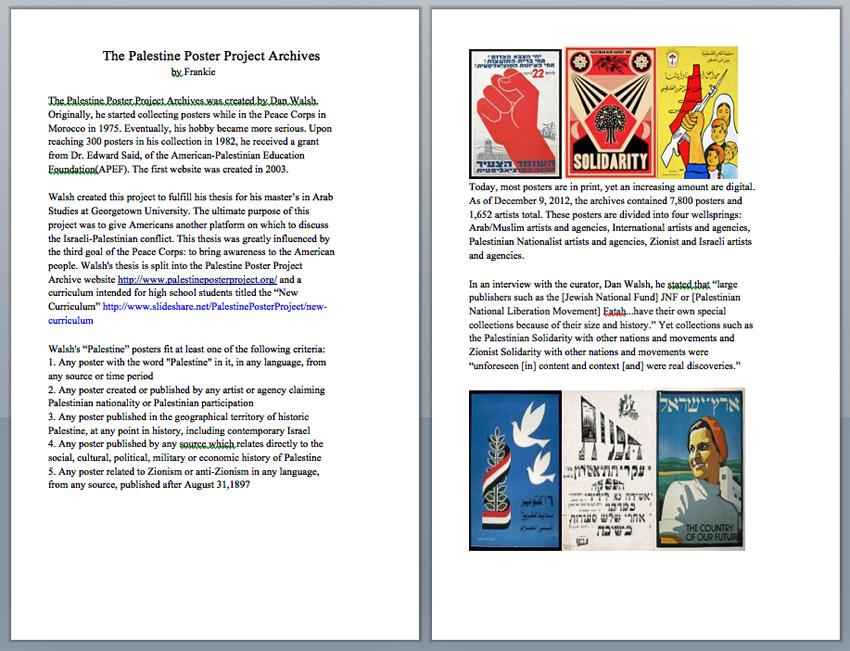Source: Palestine Through Art, Film and Literature The Palestine Poster Project Archives
by Frankie
The Palestine Poster Project Archives was created by Dan Walsh. Originally, he started collecting posters while in the Peace Corps in Morocco in 1975. Eventually, his hobby became more serious. Upon reaching 300 posters in his collection in 1982, he received a grant from Dr. Edward Said, of the American-Palestinian Education Foundation(APEF). The first website was created in 2003.
Walsh created this project to fulfill his thesis for his master’s in Arab Studies at Georgetown University. The ultimate purpose of this project was to give Americans another platform on which to discuss the Israeli-Palestinian conflict. This thesis was greatly influenced by the third goal of the Peace Corps: to bring awareness to the American people. Walsh's thesis is split into the Palestine Poster Project Archive website http://www.palestineposterproject.org/ and a curriculum intended for high school students titled the “New Curriculum” http://www.slideshare.net/PalestinePosterProject/new-curriculum
Walsh's “Palestine” posters fit at least one of the following criteria:
1. Any poster with the word "Palestine" in it, in any language, from any source or time period
2. Any poster created or published by any artist or agency claiming Palestinian nationality or Palestinian participation
3. Any poster published in the geographical territory of historic Palestine, at any point in history, including contemporary Israel
4. Any poster published by any source which relates directly to the social, cultural, political, military or economic history of Palestine
5. Any poster related to Zionism or anti-Zionism in any language, from any source, published after August 31,1897
Today, most posters are in print, yet an increasing amount are digital. As of December 9, 2012, the archives contained 7,800 posters and 1,652 artists total. These posters are divided into four wellsprings: Arab/Muslim artists and agencies, International artists and agencies, Palestinian Nationalist artists and agencies, Zionist and Israeli artists and agencies.
In an interview with the curator, Dan Walsh, he stated that “large publishers such as the [Jewish National Fund] JNF or [Palestinian National Liberation Movement] Fatah...have their own special collections because of their size and history.” Yet collections such as the Palestinian Solidarity with other nations and movements and Zionist Solidarity with other nations and movements were “unforeseen [in] content and context [and] were real discoveries.”_______________________Teacher's StatementTeaching Palestine through cultural works is a way to expose high school students to art, film, literature, music, and poetry that they are otherwise unfamiliar with, created by people whose voices these students have never heard. We don't have to argue about Israel vs. Palestine, who exists, or who has the right to exist. Palestinians exist, here is some of their work, and while much of it addresses their political situation, it is also an expression of everyday life and experience. Art is understood and accepted as subjective, and in this realm Palestinians can tell their own story without a demand that it be placed alongside (underneath?) an Israeli story. This class is not about "the Israeli-Palestinian conflict" or the history of Zionism. It is about Palestinian art. It is essentially creative, positive, and hints at not only what people are fighting against (injustice, oppression), but what we/they are fighting for. Hannah Mermelstein, NYC - 2013

